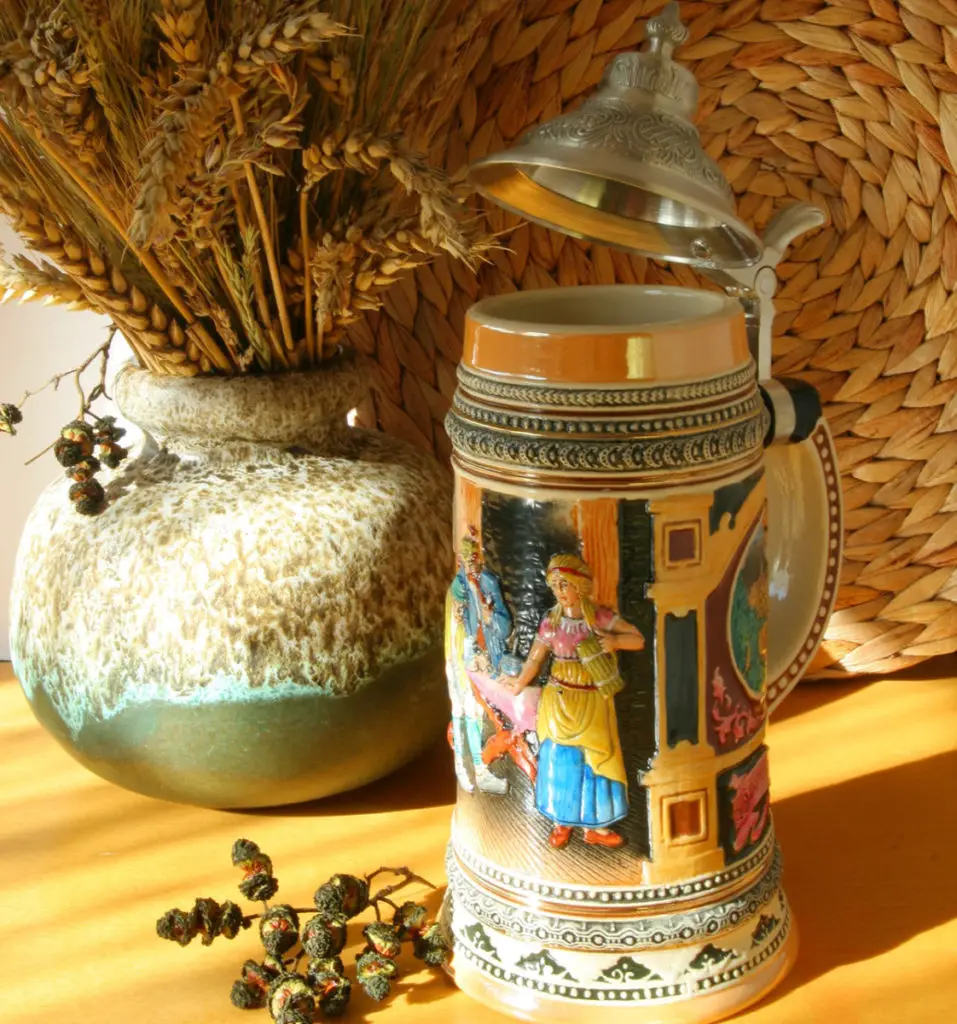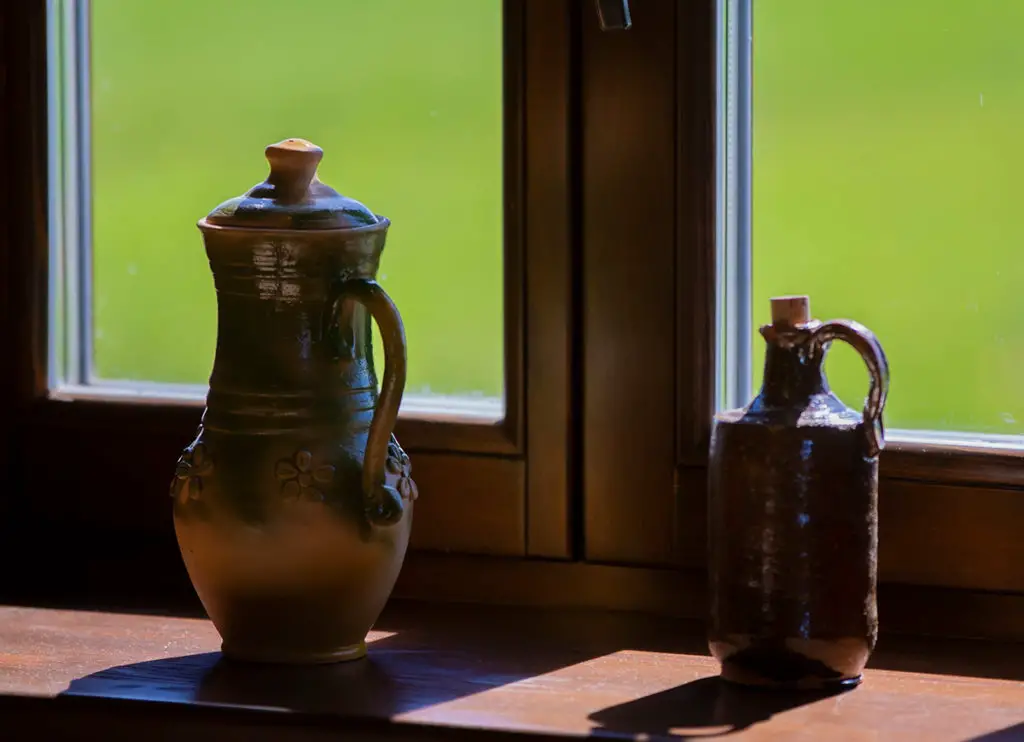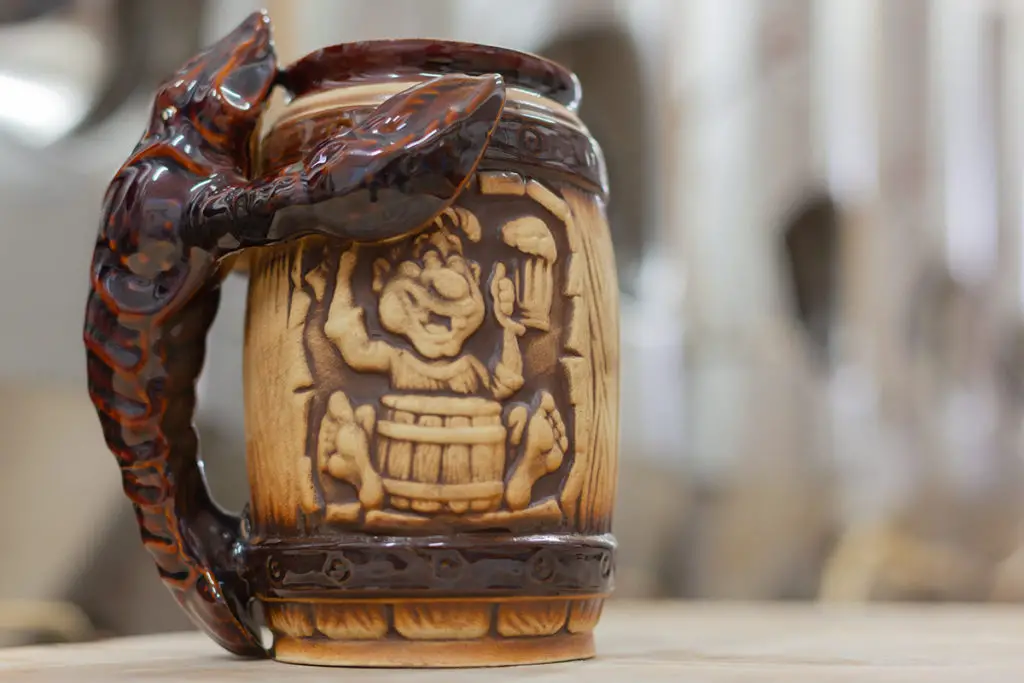Beer steins have been around for ages, as their production dates back to the 14th century. Originally made in Germany from earthenware, these beer mugs are now available in different materials such as ceramic, glass, and silver. Some beer steins are highly valuable, while others are just tourist knockoffs– but how can you tell a good stein when you see one?
Your beer stein is valuable if a reputable brand made it or if it is an antique. The value of your beer stein will depend on several factors, including its authenticity, age, and origin. So, to tell whether your stein is a valuable antique, seek a professional appraisal from a stein expert.
In this article, I’ll help you determine whether your beer stein is a valuable collectible or just a pretty mug. I’ll cover what to look for when appraising a stein and tell you more about how expensive these beer cups can be. So, let’s dig in!
What Makes a Beer Stein Valuable?
Authentic beer steins are antiques that have traversed many countries globally. They’re available in various sizes and materials, featuring a wide array of designs and artwork.
However, many imitations have cropped up due to their esteemed value, rendering it challenging to distinguish between authentic steins and cheap copies.

BEER DROP: Boxes of beer from Award-winning microbreweries → Join The Club
If you’re not a professional estimator, you can’t accurately tell whether your beer stein is valuable by checking its features. Observation will only point out some details, including mold numbers, makers’ names, and place of origin.
The best way to know if your beer stein is valuable is to consult a stein expert or seek information from stein collectors’ clubs to determine the value of your beer stein.
Now, what features can help you determine if a beer stein is valuable?
The age, material, maker’s names, trademarks, and lid types of a beer stein can make it valuable. Some beer steins are prized for how old they are, while others are collectibles from a reputable brand. So, to determine the value of your stein, you’ll have to look at all these factors.
So, let’s talk more about what you’ll need to consider when appraising your stein.
The Beer Stein’s Age
As mentioned earlier, beer steins originated from Germany during the 14th century.
Initially, German potters made earthenware drinking containers with handles but no lids. However, the advent of the bubonic plague (The Black Death) propelled the government to pass a law requiring all food and beverage containers to have lids.

Hence, the decree contributed to the evolution of the containers into mugs with hinged lids. Since they were initially made from earthenware and later stoneware, they obtained the German names ’steinzeug krug,’ meaning ‘stone jug.’
Their wide usage as beer containers led to adopting the name “beer stein,” following their export to other parts of the world.
Naturally, older beer steins have more value since they are more collectible and rare. Finding a pre-plague stein without a lid is sure to get you a massive amount of money if you choose to sell it. However, some steins from just the past 20 years can also be valuable, so it doesn’t have to be old to be worth good money.
According to Stein Collectors International, determining the authenticity or value of a beer stein is like a puzzle. So, most people resort to inspecting the mugs for some clues, including the maker’s marks, paintings, or the types of lids. However, these may not always give accurate information as many imitations are currently available.
Stein Collectors International highlights some aspects that can help stein enthusiasts estimate the period when a particular stein was made. When appraisers look at a stein, they usually analyze the material used to make the mug, investigating the age of the clay type, glazes, and paints used.
However, there are exceptions in each case due to limitations in the evolution of stein production and records preservation.
The Material the Beer Stein Is Made Of
Beer steins exist in many forms today, and they are made from various materials with many different designs and artwork. Your stein’s material may give a clue on when the beer mug was made. Moreover, if it’s an original piece, this can determine its value.
Here are some of the most common stein materials and their characteristics:
- Earthenware. Natural clay was the earliest stein-making material. Earthenware steins range from pale ivory to dark brown. They also comprise relief decorations that could tell stories, including drinking scenes, couple courtships, and early domestic life. The decorations in earlier pieces are hand-painted and feature cobalt blue, dark green, maroon, and brown backgrounds painted with natural pigments.
- Stoneware. Stoneware improved from earthenware, as the material is non-porous and chips less. Like earthenware steins, stoneware steins had etched outline decorations. Some of the most valuable antiques are made from these two clay-based materials.
- Porcelain. These delicate, white clay steins have different decorations, including hand painting, decal, or transfer printing. Old porcelain steins are mostly hand-painted, and some have silver and gold decorations, translucent pictures, and lithophane. Contrastingly, contemporary porcelain steins feature the country of origin and may have some scratched areas due to sandpapering.
- Creamware. These white steins resemble porcelain ones but are lightweight and have no lithophane (at the bottom). They may feature similar decorations to porcelain steins, but they’re less costly than China. Moreover, most older creamware steins have enamel decorations and hand paintings.
- Salt-glazed stoneware. Salt-glazed pottery originated from the Westerwald area of Germany in the 17th century. These steins had similar motifs as earthenware steins and cobalt blue or manganese-violet decorations. However, they were vitrified and sturdier than the former steins. You may be able to feel a rougher, sandpaper-like texture in the glaze.
- Glass. Early glass steins had minimal markings, making it difficult to analyze them. However, some were etched, engraved, cut, pressed, or painted. They’re not similar to the glass containers we have today, as most of them appear mold-blown with sand or lime spots, streaks, bubbles, and discolorations.
Note: Some old glass steins may be plain and consist of painted inserts on the pewter lids. However, some artists imitate these stains by adding the pewter lids to ordinary contemporary glass containers or making replica mold-blown steins.
The Stein Makers’ Names
During the early production era, many small-scale potters didn’t write anything on their steins, making it difficult to authenticate most of their remaining pieces.
However, several German-based stein-making companies included their names (or initials), usually stamped or carved into the stein base. Hence, you can tell the origin of such beer steins from these markings.
Some of the renowned stein centers in Germany include Siegburg, Cologne, Frechen, and Rhineland.
Also, after 1918, some factories marked their top-notch steins, distinguishing them from ordinary steins for domestic use. However, not all high-quality steins obtained recognition during that time, and the existing ones have no information about their manufacturers.
So, if you don’t see a trademark on your stein, it could still be old and worth good money. However, unmarked pottery is always a challenge to authenticate.
The Trademark on the Beer Stein
From 1887, all exported German-made steins had to bear the country’s name, according to the “Merchandise Act.” Therefore, it’s easy to tell whether your beer stein is from Germany if made during this period. Additionally, some manufacturers altered their trademarks over the years, enabling stein collectors to trace their manufacturing dates.
Generally, german steins hold the top value, so keep an eye out for german marks. Still, steins from surrounding countries such as Austria can also fetch a high price.
The Beer Stein’s Lid Type
Most original beer steins had hinged pewter lids. This metal’s appearance changes with time, and the lid’s interior becomes lighter than the exterior. So, a stein’s lid’s shape, weight, and color can determine its authenticity.
The pewter lids of the earliest beer steins had elaborate shapes, were heavier, and were more durable than modern ones. Contrastingly, contemporary pewter lids are made of metal cast into a single cone-shaped mold. Hence, they have knurling edges, are lighter, and tear easily.
What Is the Value of Beer Steins?
Beer steins vary in value, depending on their authenticity, age, material, and other features. Since most beer steins are collectibles, their price may also depend on how the interested party perceives them. However, original German stein antiques are more expensive than other stein types.

The value of beer steins ranges from $50 to $5000, depending on the piece’s features. So, for example, if your stein has a trademark from renowned German-based manufacturers, it could cost hundreds of dollars.
Some of the most popular stein-makers include:
- Merkelbach and Wick
- Handgemalt
- Dumler and Breiden
- Marzi and Remy
- Rastal Werk
All in all, the main factors that determine how much your stein can cost if someone is interested in buying it are:
- Originality. Most antique collectors value authentic items. Hence, you’ll probably find it hard to sell your beer stein if it’s a fake copy. So, it’s crucial to determine its authenticity before the sale.
- Beer stein condition. A stein may fetch a lower price if it’s in poor condition, such as chipped, faded, or lacking original parts. Additionally, it may be cheaper if it has unappealing discoloration or if the hinge is broken. Also, collectors find steins with no leads or mountings less attractive.
Conclusion
A beer stein is a perfect antique, whether it’s a gift, inheritance, or collectible. However, it’s crucial to determine whether your stein is authentic if you plan to sell it, and the features to look at to determine the authenticity include:
- The material
- The maker’s names
- Trademarks
- Lid types
Moreover, your beer stein’s value will also depend on its condition.
